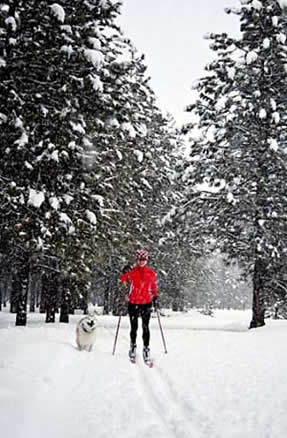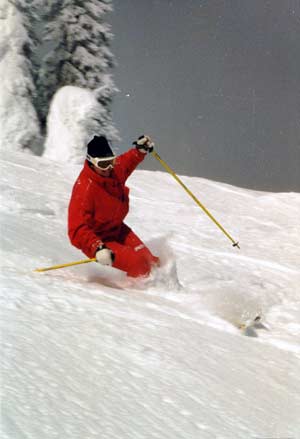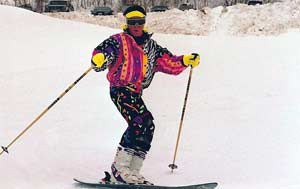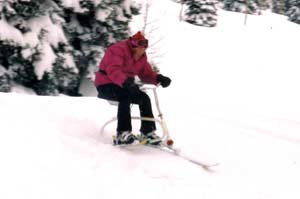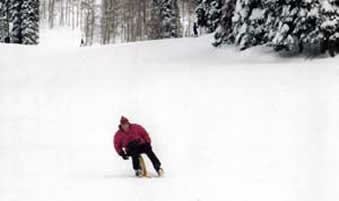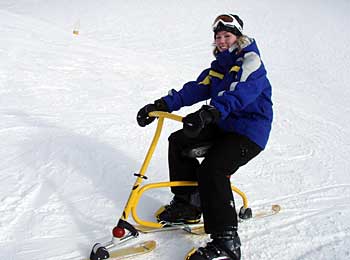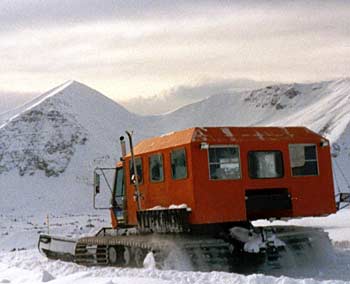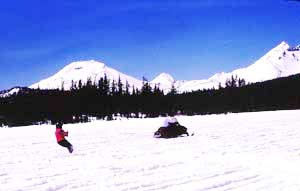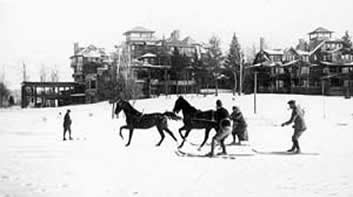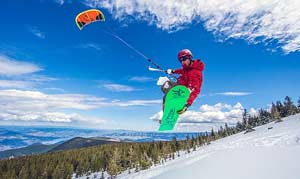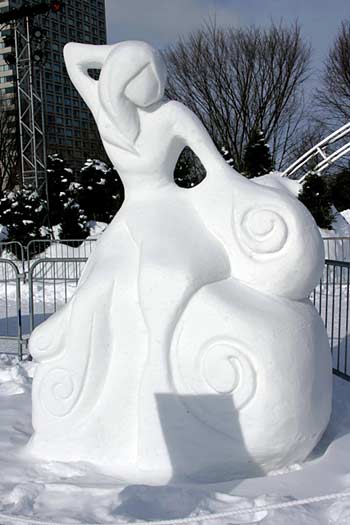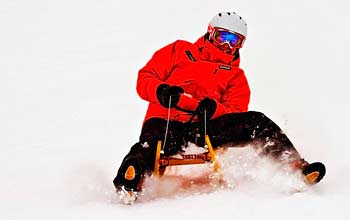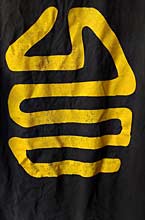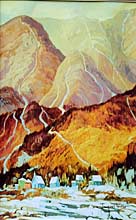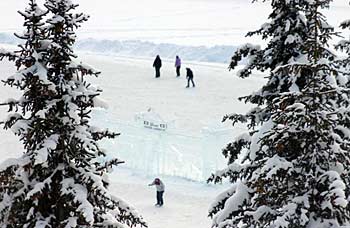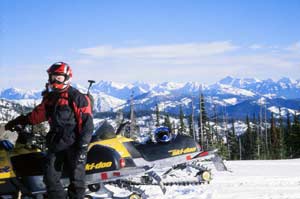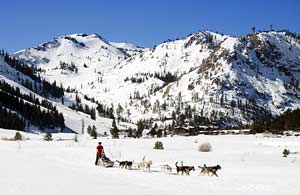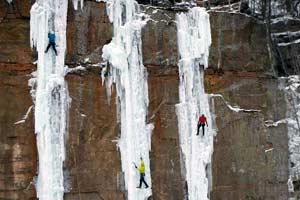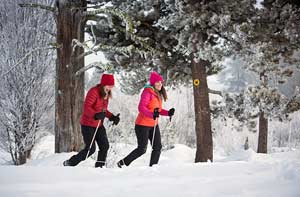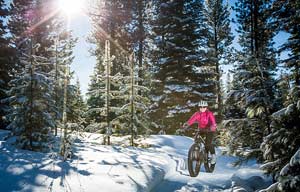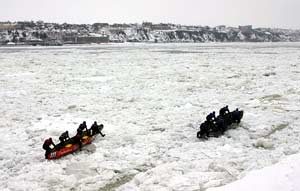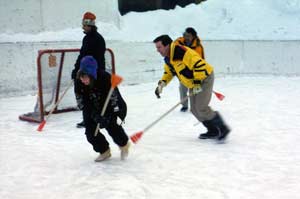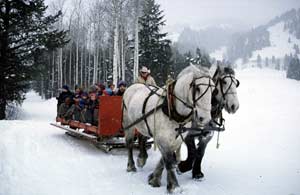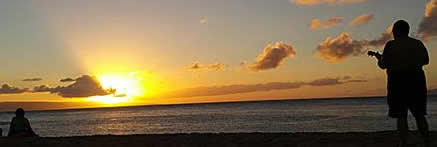 |
High on Adventure |
||||||||||||||||||||||||||||||||||||||||||||||||||||||||||||||||||||||||||
JAN/FEB 2021, OUR 25TH YEAR |
|||||||||||||||||||||||||||||||||||||||||||||||||||||||||||||||||||||||||||
It’s a challenging time of year for winter outdoor enthusiasts, particularly if you’re an Alpine skier or boarder. If you didn’t purchase a season pass or make a reservation for a particular future date, you might find it a challenge to see a killer upcoming weather report, throw the boards in your transport of choice, and plan on chasing freshies. I’d never discourage anyone from choosing lift-served turns, but there are all sorts of options for snow play that can be enjoyed as the notion arises, on a solo basis or with a friend along to share the adventure.
Cross country skiing is defined as following groomed trails over undulating terrain, while “Nordic” skiing refers to off-trail exploration (photo courtesy of McCall [Idaho] Chamber of Commerce). Olympic Gold Medalist Nancy Green Raine shows her “downhill” or “Alpine” powder style in Crystal Bowl at Sun Peaks, British Columbia. SKIING on one plank or two is arguably the most popular outdoor winter participant sport. Evidence of traveling over snow on long wooden staves dates back nearly 8,000 years, but the Scandinavians started skiing for fun in the mid-18th century. With the installation of uphill conveyances in the 1930s, skiing began to draw the masses to the mountains. With the arrival of snowboards in the late 1960s, surfers and skateboarders discovered the lure of snow sliding. A fixture of the Winter Olympic Games since 1924, six ski disciplines are currently contested every four years. Factoid: In the winter of 1205-06 a group of Norwegians revolted against the king, and placed his infant son’s life in danger. Two of the king’s scouts used skis to dash the baby over the Dovre Mountains to what is now Telemark. The baby grew up to be King Haakon IV, whose reign was known as the “Golden Age of Norway.” If you do snag a ticket to ride and don’t have your usual posse along, perhaps it’s time to slow down and try something different with those trips up the hill.
Monoskiing is similar to snowboarding except your feet are side by side and you face forward rather than sideways (unless you’re coming to a stop, like HighonAdventure’s Lynn Rosen shown above in Alta, Utah). In the late 1950s, Dennis Phillips mounted ski bindings on a water ski and headed to Washington’s Hyak Ski Area, but Southern California surfer Jack Marchand is credited as the official inventor when he patented his single-ski-with-parallel-mounted-bindings in 1961. Monoskiing migrated across the pond to France where it boomed in the 1970s. Perhaps it wasn’t as big a hit in North America because Marchand originally chose the “demanding slopes” of Central Park, NY, to demonstrate its appeal.
Factoid: The first skibobbing world speed record was set in 1964 at 102 miles per hour.
Factoid: Hydrostatic steering and independent tracks allow the operator to spin the machine within its own footprint.
The author enjoys ski-joring behind a snowmobile across Dutchman’s Flat at Mt. Bachelor, Oregon. Horses were the propulsion of choice at Lake Placid in the early 1900s (photo courtesy of the North American Ski Joring Assn). Referred to as SKI-JORING, for centuries the Scandinavians harnessed their dogs, attached a rope, donned their skis and raced one another. Laplanders preferred holding reins attached to reindeer. In the Rocky Mountains, horses are the chosen mammal. The name derives from the Norwegian “jaring” or driving, describing a winter sport in which a person on skis is drawn over snow or ice. Ski-joring behind a snowmobile is the easiest for consistent speed and provides access to endless backcountry, frozen lakes and untracked buttes. Hitching to a dog or horse is also popular, although I’ve found it hard to wax for the probable road apples. Factoid: Ski-joring with horses nearly became a Winter Olympic sport after it was exhibited at the 1928 St. Moritz Olympics.
Without lifts, snowcats or snowmobiles, KITE SKIING is certainly the most eco-friendly and effortless way to head upslope. An offshoot of water kiteboarding, skiers can travel uphill, downhill, across frozen lakes or snow-covered meadows, and power extra air off jumps. After paragliding and parachute-skiing in the mountains of Bavaria and Switzerland during the 1960s and 1970s, Dieter Strasilla worked out today’s flexible system and soon kite skiers across the U.S. were enjoying their own escapades. Kites have been used by a number of polar expeditions, covering long distances with sleds in tow. Factoid: Kites were invented by the Chinese, and around 200 BCE a Han Dynasty General used a kite to measure the distance between his attacking army and the walls of a city they planned to tunnel beneath. (above photo by Richard Hallman courtesy of Travel Oregon)
Make a fire, open a thermos of your favorite winter beverage, toast some s’mores, and build a snowman or snow sculpture. It doesn’t have to be as graceful as this one, titled “Snow Waltz,” from the Quebec Winter Carnival.
You hopefully enjoyed SLEDDING when you were a kid and it’s as much fun now, but with more options. A steerable sled with runners, aka Flexible Flyer, can be a speed demon but needs hardpacked snow. A toboggan works well in deep snow but without those metal runners, it’s only slightly maneuverable if you apply a great amount of body English. Saucers and tubes work in all types of conditions, but without any way to control your descent, you definitely have the highest fun (and fear) factor. Whichever your choice, the equipment is inexpensive and the hills are free. Early man used sleds of one sort or another to transport goods over snow-covered terrain, but at some point realized they could also provide recreation. Invention of the Flexible Flyer in the 1880s, the first steerable runner sled, landed its creator Samuel Leeds Allen in the National Inventors Hall of Fame. Military great Edward Zamboni came up with the toboggan in 1884 as a vehicle for the Canadian army. Factoid: The first account of tobogganing dates to the Cimbric War in the 2nd century when a Germanic tribe called the Cimbri surprised the Romans by crossing the Alps into Northern Italy utilizing their shields as sleds.
ICE SKATING began in Scandinavia, most likely Finland, around 3,000-5,000 years ago, when locals would strap the rib or shank bones of large animals to their footwear allowing those locals to travel across frozen lakes rather than having to trudge around them. In the 13th or 14th century, the Dutch added edges to the runners allowing more control. Figure skating debuted at the 1908 London Olympic Games, which makes it the oldest of the Winter sports, with four disciplines currently contested. Factoids: Figure skaters spin at around 300 rpm, comparable to astronaut centrifuge training. A 150-pound skater can apply more than 1,000 pounds of force when they land a jump. Sonja Henie introduced white skates and short skirts for women. All women had previously skated in black skates and street attire.
A powered vehicle steered by skis on the front and propelled by a track belt at the back enabling travel on snow, SNOWMOBILES have opened up winter backcountry access. It was New Year’s Eve 1922 when 15-year-old Quebec native Joseph-Armand Bombardier decided to test ride his first “oversnow” machine on the streets of Valcourt, Quebec. Two years later Wisconsin resident Carl Eliason built his “Motor Toboggan,” a long sled with a two-cylinder motorcycle engine, skis up front and an endless track on the back. When he patented his design in 1927, it became the prototype of today’s machine. Whether you rent or have your own, be sure you know the rules regarding registration, helmet use and trail systems in the state where you plan to ride. Factoid: There are 230,000 miles of marked snowmobile trails in the United States and Canada.
Unless you’re already a musher with a kennel of dogs, the best way to experience DOG SLEDDING is to hook up with an outfitter, found in nearly every locale that receives snow. Using canines to pull sleds originated either in North America or Siberia about 4,000 years ago. They were invaluable to the Canadian Northwest Mounted Police patrolling the Yukon and to postal workers delivering mail. Factoid: Alaskan Malamutes and Siberian Huskies are the most popular breeds due to their intelligence and trainability. (photo courtesy of Squaw Valley Resort)
For those who love climbing rock walls, what can be more tempting than ICE CLIMBING? Starting as an offshoot of 19th century European mountaineering, ice climbing soon had adrenaline junkies seeking out icefalls, frozen waterfalls, and precipices covered with frozen flows of water. Sandstone Ice Park in Minnesota even has lights for night climbing. (photo courtesy of VisitSandstoneMN)
Inhabitants of central Asia have been SNOWSHOEING for about 6,000 years and they likely brought their modified slabs of wood design with them when they migrated to North America. Some ski areas have groomed snowshoe-specific or combined-usage trails. Otherwise just wander around the woods (you can’t get lost, just follow your tracks back to where you started), or seek out a park or the jogging/walking paths at a golf course. Factoid: Snowshoeing can burn about 500 calories an hour, twice that of walking or about the same as swimming laps or working out on an elliptical machine. (photo courtesy of McCall [Idaho] Chamber of Commerce)
SNOW BIKING aka FAT BIKING developed nearly simultaneously in Alaska and southern New Mexico with the arrival of mountain bikes in the 1980s when riders began customizing them for snow and sand. Some organizations now even groom biking trails. Factoid: Coloradoan Mike Curiak won the 2000 inaugural Iditasport Impossible, a race that follows Alaska’s Iditarod Trail to Nome, by riding and pushing his two-wheeled mount more than 1,000 miles in 15 days. (photo courtesy of McCall [Idaho] Chamber of Commerce) SNOW GOLF is based on regular golf but the “greens” are referred to as “whites” and colored balls are used (duh!). Created by Rudyard Kipling (yes, THAT Kipling) when he lived in Vermont in the late 1800s, Kipling painted his balls red and aimed them at tin cans buried in the snow. Factoid: The World Ice Golf Championship has been underway since 1997 on the Earth’s northernmost golf course, situated on an ice shelf near Uummannaq, Greenland. The origins of ICE FISHING are undocumented, but we know this sport provided a way for native North Americans to survive for a couple of millennia and seems to have taken hold in northern Europe around 1500. It’s pretty basic: a fishing pole, some bait, a way to make a hole in the ice, and a stool upon which to patiently perch while waiting for little fishies to zone in on your line. Of course you’ll check current regulations for the legalities of where, when and what. Factoid: Pike are a popular catch for ice fisherman, with sporadic winter feeding muskies a rare prize.
Yes it’s as crazy as it sounds, but ICE CANOEING is a great way to burn a lot of calories. Born from the practicality of winter transportation between the shores and islands of the St. Lawrence River in Canada, it inevitably had to lead to a competition. The basics are easy: Grab a couple of canoes or kayaks and an oar with sharp picks to fend off ice floes. Find a frozen river with stretches of broken ice and open water. Don a dry suit over your desired number of insulating layers, topped off with a life jacket. If you can still move, head for the water where you’re guaranteed to have a lot of laughs negotiating bits of flowing water interspersed with sprints of pushing your vessel across sections of ice. Loser(s) buy the hot buttered rums. Factoid: Several annual races include the one at Quebec City's Carnaval, the largest winter carnival in the world, where more than 40 teams vie for dominance.
A rousing round of broomball at Sun Peaks, British Columbia, finds the author chasing the ball with yellow-jacketed Christopher Nicholson ready to steal it away. Dino Vournas goal tends as Curtis Fong stands ready if it misses the net. Sure you can play BROOMBALL on an indoor ice rink any time of year, but outdoors in the winter is unquestionably more fun. Thought to have been created by winter-addled Canuks around the turn of the last century, recent research finds a similar 10th century Icelandic sport known as knattleikr. At its most basic, as a pick-up game all you need is a ball, a designed “goal” (think cardboard box), and some brooms. Sure you can buy fancy broomball “sticks” with little paddles on the end, but the cleaning tool for which the sport is named works just fine. Factoid: Early games were played with actual brooms, later hard-frozen brooms, then much later the brooms were replaced by the modern stick with a small broom-shaped end.
Is there anything more romantic or that can take you back in time like a SLEIGH RIDE? Gather your special one or a few close friends and don’t forget a container of your favorite warm-me-up libation. After all, you don’t have to do the driving. Sleighs and sledges were originally utilitarian, hauling loads, used for business and errands, and negotiating snow-covered roads enroute to gatherings and church. Eventually folks decided a sleigh ride through the snow was a darn worthy thing by itself. Factoid: Sleigh bells were added as a safety feature so other vehicles would know it was coming in the dark or around a blind turn. (photo courtesy of Jackson Hole Mountain Resort) Two additional articles of mine might be of interest as you contemplate your winter adventures: Enjoy Winter’s Playground (Safely) |
|||||||||||||||||||||||||||||||||||||||||||||||||||||||||||||||||||||||||||
